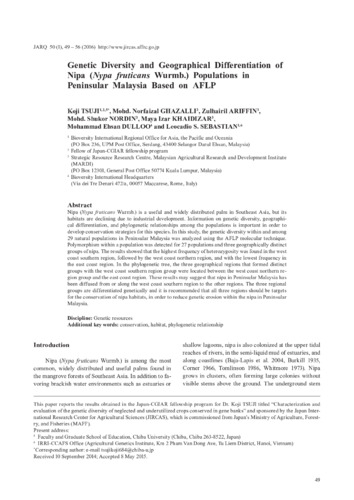Genetic diversity and geographical differentiation of nipa (Nypa fruticans Wurmb.) populations in peninsular Malaysia based on AFLP
Nipa (Nypa fruticans Wurmb.) is a useful and widely distributed palm in Southeast Asia, but its habitats are declining due to industrial development. Information on genetic diversity, geographical differentiation, and phylogenetic relationships among the populations is important in order to develop conservation strategies for this species. In this study, the genetic diversity within and among 29 natural populations in Peninsular Malaysia was analyzed using the AFLP molecular technique. Polymorphism within a population was detected for 27 populations and three geographically distinct groups of nipa. The results showed that the highest frequency of heterozygosity was found in the west coast southern region, followed by the west coast northern region, and with the lowest frequency in the east coast region. In the phylogenetic tree, the three geographical regions that formed distinct groups with the west coast southern region group were located between the west coast northern region group and the east coast region. These results may suggest that nipa in Peninsular Malaysia has been diffused from or along the west coast southern region to the other regions. The three regional groups are differentiated genetically and it is recommended that all three regions should be targets for the conservation of nipa habitats, in order to reduce genetic erosion within the nipa in Peninsular Malaysia.

